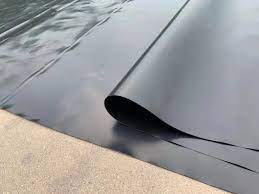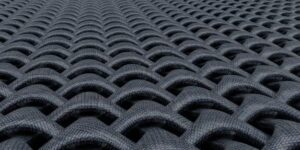Landfill Project at Delhi – Case Study

Landfills are notorious for causing a variety of environmental and health issues, so they should only be used if waste materials cannot be reused, recycled, or recovered. Landfills are unsightly and unpopular among locals. They not only have an impact on the natural landscape, but decaying organic waste can also emit an unpleasant odor into the surrounding air.
The large amount of waste combined with the gases produced by landfill sites can easily start fires. In addition to polluting the air, if fires are not extinguished quickly, they can spread and destroy nearby habitats.
Product – Ocean HDPE Geomembrane-1500 Micron, Ocean Geotextile PP-400 GSM, and Ocean Geosynthetics Clay Liner-5MM
Quantity – 6300 Sqm, 12240 Sqm, and 6058.8 Sqm
Location – Delhi
Problem
If you live in Delhi-NCR, you’ve probably driven past one of the three massive garbage mountains in Ghazipur, Bhalswa, or Okhla, and you’ve probably seen clouds of smoke above them. These garbage mountains or landfills have recently been in the news for catching fire and raging for days. And, as with most landfills, putting out the fires was a difficult task.
These landfills house legacy garbage, which is nearly impossible to deal with because we continue to dump new garbage on it every day. How will you deal with what lies beneath all of it if you keep piling more and more on top of what already exists?
What makes it even more difficult is that the plastic we are dumping is becoming increasingly complex. To use an oversimplified term, the garbage contains e-waste, medical waste, and a variety of complex waste and plastics, among other things. This makes segregation a huge challenge.
Solution
HDPE geomembrane for landfills is just one of many applications where HDPE geomembrane can provide an anti-seepage liner system in the civil engineering sector. The primary raw materials used in HDPE geomembrane are high-density polyethylene and medium-density polyethylene. HDPE geomembrane liners come in two varieties: smooth surface geomembrane and rough surface geomembrane.
Geomembrane liners made of high-density polyethylene (HDPE) are commonly used as part of a barrier system at the landfill’s base in municipal solid waste landfills. In a landfill with a single liner, a gravel leachate drainage layer, a protective layer, and a composite liner made of an HDPE geomembrane and either a geosynthetic clay liner or a compacted clay liner are commonly used. The composite liner is the primary barrier to leachate migration to the surface or groundwater. A recent study on fluid and gas leakage through composite liners was extensive.
Among other things, HDPE geomembrane liners have anti-seepage properties, high chemical resistance, incredible stress cracking ability, low permeability, superior UV resistance, and low-temperature resistance to brittleness. As a result, HDPE geomembrane is the most widely used anti-seepage bottom pond lining and covering material for a wide range of applications, including landfill projects, biogas digester projects, sludge, and sewage treatment facilities, and animal manure evaporation ponds.
The capacity of the landfill required 6300 Sqm of HDPE Geomembrane-1500 Micron, 12240 Sqm of Geotextile PP-400 GSM, and 6058.8 Sqm of Geosynthetics Clay Liner-5MM.


